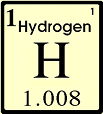Shallow P donors in Silicon
![]()
Phophorus atoms in silicon matrix is considered to be one of the most promising system to build a quantum computer. Historically this system has been studied in 1960’s [1] utilizing magnetic resonance techniques (ESR, NMR, ENDOR). A new interest towards the system was awaken after a paper describing a scheme of quantum computing which could be scaled in theory to unlimited number of qubits. The quantum information is stored in the spins of electrons and nucleus of phosphorus. One of the limiting factors are then long coherence times of the spins. Our experimental spectrometer, formerly used to study spin polarized atomic hydrogen gas below 1 K temperatures and at 5 T magnetic fields, is excellent for studying spin dynamics and relaxation of P in Si lattice.
Atom impurities (donors) from group V (P, As, Sb) in Silicon creates n-type semiconductor. A phosphorus impurity in silicon substitute a Si atom and the fifth electron is only loosely bound to the P nucleus (shallow donor). The electron wave function having a radius of about 20 lattice constant overlaps with approximately 1500 Si nuclei. If the lattice is made of 28Si isotopes the interaction with electron spin is negligible. Natural Si contains 4.7% of isotope 29Si which has a magnetic moment. These nuclei has hyperfine coupling with the electrons reducing their coherence times.
However, the hyperfine interaction gives possibility to manipulate the spin of the 29Si via the electron spin. We have already demonstrated [2, 3] that 29Si spins can be partially polarised using dynamic nuclear polarization techniques. We are studying possibilities to utilize large ensembles of 29Si spins in quantum computing similar to to experiments with nuclear magnetic resonance [4], [5].
- G. Feher, Electron Spin Resonance Experiments on Donors in Silicon. I. Electronic Structure of Donors by the Electron Nuclear Double Resonance Technique. Physical Review, 114, 1219 (1959).
- J. Järvinen, J. Ahokas, S. Sheludyakov, O. Vainio, L. Lehtonen, S. Vasiliev, D. Zvezdov, Y. Fujii, S. Mitsudo, T. Mizusaki, M. Gwak, SangGap Lee, Soonchil Lee, and L. Vlasenko, Efficient dynamic nuclear polarization of phosphorus in silicon in strong magnetic fields and at low temperatures, Physical Review B, 90, 214401 (2014).
- J. Järvinen, D. Zvezdov, J. Ahokas, S. Sheludyakov, O. Vainio, L. Lehtonen, S. Vasiliev, Y. Fujii, S. Mitsudo, T. Mizusaki, M. Gwak, SangGap Lee, Soonchil Lee, and L. Vlasenko, Microscopic control of 29Si nuclear spins near phosphorus donors in silicon, Physical Review B, 92, 121202 (2015).
- Negrevergne, C. et al., Benchmarking Quantum Control Methods on a 12-Qubit System, Physical Review Letters, 96, 170501 (2006).
- M. Shahriar, P. Hemmer, S. Lloyd, P. Bhatia, and A. Craig, Solid-state quantum computing using spectral holes, Physical Review A, 66, 032301 (2002).
